Next-Generation Sequencing Analysis for HIV-1 Genotyping and Drug Resistance Mutations Mapping in Sicily, Italy
- PMID: 40872843
- PMCID: PMC12390713
- DOI: 10.3390/v17081129
Next-Generation Sequencing Analysis for HIV-1 Genotyping and Drug Resistance Mutations Mapping in Sicily, Italy
Abstract
Background: The advent and continuous improvement in antiretroviral therapy (ART) have profoundly altered the clinical course of HIV infection, shifting the focus from AIDS-related complications to the management of age-related comorbidities and non-AIDS-related hospitalizations. In this evolving context, optimizing ART is essential, with genotypic resistance testing (GRT), particularly through next-generation sequencing (NGS), playing a pivotal role.
Methods: This multicenter, retrospective cross-sectional study investigated HIV-1 subtypes, resistance mutations, and drug resistance profiles among 367 people living with HIV (PLWH) in Sicily, based on 384 GRTs performed at the Microbiology Laboratory of the University Hospital of Palermo.
Results: Subtype B was the most prevalent (50%), followed by circulating recombinant forms (30%). Among treatment-naïve individuals, resistance-associated mutations were infrequent, with prevalence rates of 0.4% for NRTIs, 5.5% for NNRTIs, 1.3% for PIs, and 0.8% for INIs. Conversely, treatment-experienced individuals showed significantly higher resistance rates, especially to NRTIs (16.3%), NNRTIs (10.6%), and INIs (9.6%). No significant differences in resistance patterns were observed between B and non-B subtypes.
Conclusions: This study provides the first regional overview of HIV drug resistance across Sicily. Despite the detection of resistance-associated mutations, the overall prevalence of clinically relevant resistance, particularly to currently recommended therapies, remains low, especially among treatment-naïve individuals.
Keywords: GRT; HIV; NGS; genotypic resistance test; mutations; next generation sequencing; resistance; subtypes.
Conflict of interest statement
The authors declare no conflicts of interest.
Figures


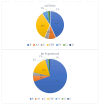

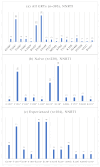
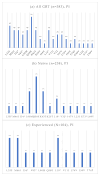
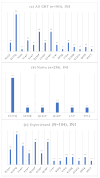
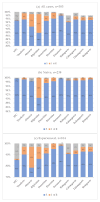

Similar articles
-
HIV-1 Drug Resistance Detected by Next-Generation Sequencing among ART-Naïve Individuals: A Systematic Review and Meta-Analysis.Viruses. 2024 Feb 2;16(2):239. doi: 10.3390/v16020239. Viruses. 2024. PMID: 38400015 Free PMC article.
-
Prevalence of Doravirine Resistance Mutations in a Large-Scale HIV-1 Transmitted Drug Resistance Survey in Buenos Aires, Argentina.Viruses. 2025 May 20;17(5):731. doi: 10.3390/v17050731. Viruses. 2025. PMID: 40431742 Free PMC article.
-
Temporal Trends in HIV-1 Subtypes and Antiretroviral Drug Resistance Mutations in Istanbul, Türkiye (2021-2024): A Next-Generation Sequencing Study.Viruses. 2025 Mar 27;17(4):478. doi: 10.3390/v17040478. Viruses. 2025. PMID: 40284921 Free PMC article.
-
Plasma Viral Load of 200 Copies/mL is a Suitable Threshold to Define Viral Suppression and HIV Drug Resistance Testing in Low- and Middle-Income Countries: Evidence From a Facility-Based Study in Cameroon.J Int Assoc Provid AIDS Care. 2024 Jan-Dec;23:23259582241306484. doi: 10.1177/23259582241306484. J Int Assoc Provid AIDS Care. 2024. PMID: 39711049 Free PMC article.
-
Trends in HIV-1 pretreatment drug resistance and HIV-1 variant dynamics among antiretroviral therapy-naive Ethiopians from 2003 to 2018: a pooled sequence analysis.Virol J. 2023 Oct 25;20(1):243. doi: 10.1186/s12985-023-02205-w. Virol J. 2023. PMID: 37880705 Free PMC article.
References
-
- Piselli P., Tavelli A., Cimaglia C., Muccini C., Bandera A., Marchetti G.C., Torti C., Mazzotta V., Pipitò L., Caioli A., et al. Cancer incidence in people with HIV in Italy: Comparison of the ICONA COHORT with general population data. Int. J. Cancer. 2025;157:1142–1153. doi: 10.1002/ijc.35493. - DOI - PMC - PubMed
-
- Pipitò L., Zinna G., Trizzino M., Gioè C., Tolomeo M., Di Carlo P., Colomba C., Gibaldi L., Iaria C., Almasio P., et al. Causes of hospitalization and predictors of in-hospital mortality among people living with HIV in Sicily-Italy between 2010 and 2021. J. Infect. Public Health. 2023;16:1703–1708. doi: 10.1016/j.jiph.2023.08.023. - DOI - PubMed
-
- EACS Guidelines 2024. [(accessed on 22 July 2025)]. Available online: https://eacs.sanfordguide.com.
-
- De Vito A., Bezenchek A., Scutari R., Colagrossi L., Valenti G., Bellocchi M.C., Pipitò L., Ferrara S., Malandrin S., Tallarita M., et al. Assessing the utilization of HIV genotype resistance testing: Insight from Italian Infectious Diseases Units. J. Glob. Antimicrob. Resist. 2025;42:1–6. doi: 10.1016/j.jgar.2025.01.018. - DOI - PubMed
Publication types
MeSH terms
Substances
LinkOut - more resources
Full Text Sources
Medical

